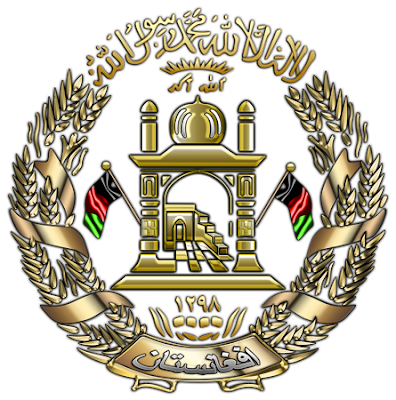Afghanistan (Persian/Pashto: افغانستان), officially the Islamic Republic of Afghanistan, is a landlocked country located in the centre of Asia, forming South Asia, Central Asia and the Middle East. With a population of about 29 million, it has an area of 647,500 km2 (250,001 sq mi), making it the 42nd most populous and 41st largest nation in the world. It is bordered by Pakistan in the southeast, Iran in the west, Turkmenistan, Uzbekistan and Tajikistan in the north, and China in the far northeast. The territory that now forms Afghanistan has been an ancient focal point of the Silk Road and human migration. Archaeologists have found evidence of human habitation from as far back as 50,000 BC. Urban civilization may have begun in the area as early as 3,000 to 2,000 BC.
The country sits at an important geostrategic location that connects the Middle East with Central Asia and the Indian subcontinent, which has been home to various peoples through the ages. The land has witnessed many military conquests since antiquity, notably by Alexander the Great, Chandragupta Maurya, and Genghis Khan. It has also served as a source from which local dynasties such as the Greco-Bactrians, Kushans, Saffarids, Ghaznavids, Ghorids, Timurids, Mughals and many others have established empires of their own.
The political history of modern Afghanistan begins in 1709 with the rise of the Pashtuns, when the Hotaki dynasty was established in Kandahar followed by Ahmad Shah Durrani's rise to power in 1747. The capital of Afghanistan was shifted in 1776 from Kandahar to Kabul and part of the Afghan Empire was ceded to neighboring empires by 1893. In the late 19th century, Afghanistan became a buffer state in the "Great Game" between the British and Russian empires. Following the third Anglo-Afghan war and the signing of the Treaty of Rawalpindi in 1919, the nation regained control over its foreign policy from the British.
After the 1978 Marxist revolution, the Soviet Union began a 10-year war in which over a million Afghans lost lives. The mujahidin insurgency generated by the Marxist government and the Soviet invasion signaled the first sustained entry of Islam into Afghan politics as the religion served as a force to unify the tribally divided multiethnic population. This was followed by the Afghan civil war (1992–1996), the rise and fall of the extremist Taliban government and the 2001 war.
Afghanistan is administratively divided into 34 provinces (wilayats), with each province having its own capital and a provincial administration. The provinces are further divided into about 398 smaller provincial districts, each of which normally covers a city or a number of villages. Each district is represented by a district governor.
The national emblem of Afghanistan has appeared in some form on the flag of Afghanistan since the inception of that nation.
The latest incarnation of the coat of arms has the added inscription of the shahadah in Arabic at the top. Below it is the image of a mosque with a mehrab that is facing Mecca with a prayer mat inside. Attached to the mosque are two flags, taken to stand for flags of Afghanistan. Beneath the mosque is an inscription that states the name of the nation. Around the mosque is a garland. The emblem of Afghanistan bears the Islamic calendar year 1298 (1919 in the Gregorian calendar), the year Afghanistan gained independence from the British Empire.
As always, the above designs are available on a limited number of selected quality products via my “World Heraldry” galleries at Zazzle. You may simply follow the direct links in the article to navigate to the corresponding galleries.
I will also make my designs available free of charge for non-commercial use to any government and military officials of the corresponding countries, as well as for non-commercial and personal use, such as school projects, presentations, forum avatars to businesses and individuals.
The above information provided in part by Wikipedia, The Heraldry Society, Global Security, and official websites of the above-mentioned countries.



No comments:
Post a Comment